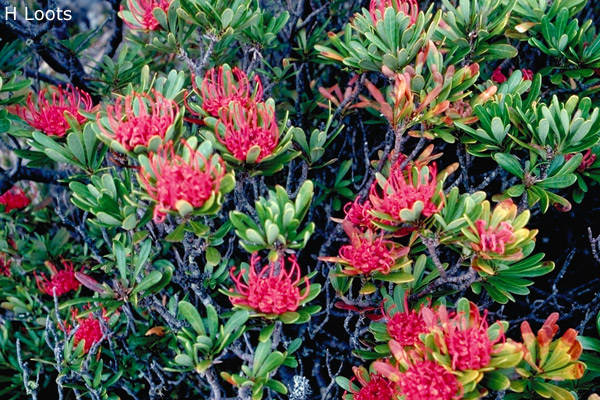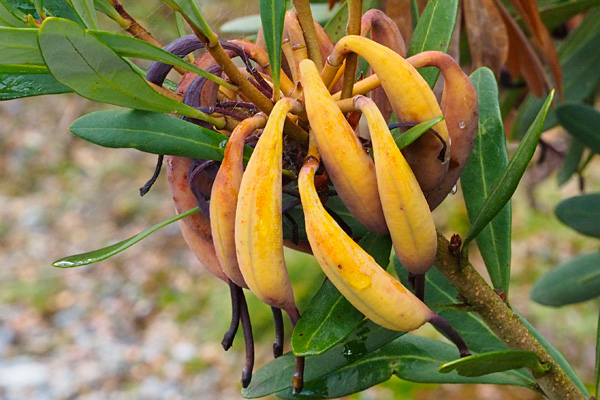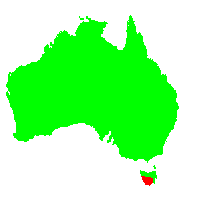General Description:
The genus Telopea contains five species all confined to east coast regions from northern New South Wales to Tasmania. The most famous species is Telopea speciosissima, the New South Wales’ waratah, which has been in cultivation since the first years of European settlement in Australia. The other four members of the genus would undoubtedly be more widely known and grown were it not for their illustrious relative. Indeed, the three southern species have all been given Awards Of Merit by the Royal Horticultural Society in the first half of the 20th Century (the fourth, Telopea aspera, or Gibraltar Range waratah, was split off as a separate species from the NSW waratah.
Telopea truncata is an upright shrub to about 3 metres, but can occasionally be found in nature as a small tree up to 10 metres high. Like its better known relative, it has an underground lignotuber and may become multi-stemmed. It has deep green narrow oblanceolate leaves up to 10cm long which are occasionally lobed. Young branches and unopened flowerheads are often covered with brownish hairs. The blooms occur in a loose cluster of 10-20 individual flowers at the ends of the erect stems. It lacks the bracts of its showy relative. The flower colour is most commonly red, though a white form is seen occasionally. Also, uniquely for waratahs, a yellow form (forma lutea) from the Mount Wellington Range south of Hobart exists and has been brought into cultivation in Tasmania. Flowers appear in summer (November to February in Tasmania) and are followered by woody seed pods which eventually split to release winged seeds.
In nature, the Tasmanian waratah grows on moist acidic soils in wet sclerophyll forest or subalpine scrubland at altitudes from 600 to 1200 metres. Though it requires good drainage, it also needs ample moisture to thrive, and soil with some clay content is said to be helpful. While lacking the density of flowers in the inflorescence that T.speciosissima exhibits, its much branched habit provides plenty of blooms which provide contrast to the attractive green foliage. Telopea truncata is an excellent candidate for gardens in cooler climates and has been grown successfully in France, Northern Spain, Vancouver in Canada and the United Kingdom.
Propagation is best from seed which should germinate within 4-6 weeks if it is viable. No special pretreatment is necessary but seedlings are susceptible to damping off (a fungal disease) and need to be kept under observation. Seed from the yellow form will grow both red and yellow flowered plants.

Telopea truncata
Photo: Harry Loots

Telopea truncata – seed pods
Photo: Brian Walters
 Australian Native Plants Society (Australia)
Australian Native Plants Society (Australia)